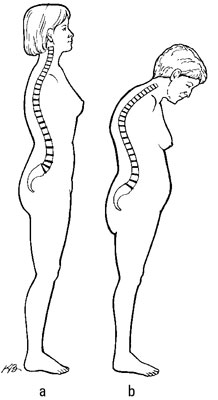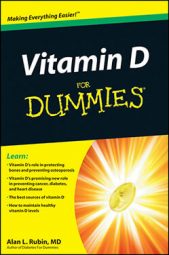Osteoporosis is a brittle bone disease in which both the structure of the bone and its mineralization are reduced. Vitamin D deficiency may be a risk factor, especially for women. People with osteoporosis are more likely to experience a bone fracture sometime in their life.
Osteoporosis is the most common bone disease, occurring in one of every three women over age 50. Even men aren’t immune to osteoporosis; 1 in 12 men over 50 suffer from the disease.
Still, osteoporosis has its greatest impact on women. At menopause, which usually happens around the midcentury mark, women begin to lose bone at an accelerated rate. If they don’t start menopause with plenty of bone, they may lose so much bone that they develop osteoporosis.
Osteoporosis generally doesn’t produce symptoms until a fracture occurs. If a vertebra in the spine collapses from lack of strength, the person may experience sudden pain in the back. If several vertebra collapse, dowager’s hump, a forward bending of the spine that’s also known as kyphosis, may develop. The other common fracture is a hip fracture.

But not all bone fractures associated with osteoporosis happen spontaneously. What’s more likely is that a person with weak bones will fall, and this will cause a fracture. These types of fracture often happen in the wrist or hip. In contrast, the spine fractures happen in response to lifting (a child, a large turkey out of the oven, heavy bags of groceries) or shoving (shoveling, pushing a mattress).
Risk factors of osteoporosis
Risk factors of an osteoporotic fracture are divided into those that you can modify and those that you can’t. Nonmodifiable risk factors include the following:
Age
European or Asian ancestry
Family history of osteoporosis
Female
Loss of testosterone in men
Menopause
Previous fracture
Modifiable risk factors include the following:
Alcohol: Limit your drinking to ten glasses of wine or its equivalent per week if you’re male and five glasses per week if you’re female. Alcohol has direct effects on bone and also affects coordination leading to more falls.
Anticoagulant use: If you have a condition that requires prevention of blood clotting, check with your doctor if you must continue anticoagulation long term.
Falls: You can prevent falls by
Avoiding sedating medications, including alcohol
Avoiding walking on ice without help
Removing household hazards such as loose carpeting, toys or pets underfoot
Using bars in the bathtub
High-protein diet: This one can be confusing. Most elderly don’t eat well and aren’t getting enough protein in the diet. It’s good for your bones if you correct this; however, some people think if a little is good, a lot is better. That’s simply not so. Too much protein may cause you to lose bone. Limit your protein intake to less than 50 grams a day.
Inactivity: Do some weight-bearing exercise for 45 minutes at least three to four times weekly.
Malnutrition: A diet that is insufficient in vitamin D and calcium should be corrected.
Glucocorticoids: If you must take glucocorticoids (for example, prednisone), use the lowest dose possible.
Thiazolidinedione drugs used in diabetes: Use a different drug for diabetes if you have osteoporosis.
Thyroid excess: See your doctor to get your thyroid under control.
Tobacco use: Don’t smoke.
Vitamin D deficiency: Follow your doctor's recommendations if you have a vitamin D deficiency.
Ways to prevent osteoporosis
You can prevent osteoporosis through lifestyle changes. Among the most important are the following:
Exercise, which includes these components:
Weight-bearing activities, such as walking, jogging, and dancing
Resistance exercises, such as free weights and machines
Balance exercises, such as tai chi and yoga
Cycling on a stationary bike (for aerobic fitness without the risk of falling)
Stop excessive drinking.
Stop smoking.
Take vitamin D, calcium, and phosphorus supplements, if any are low in the blood.

